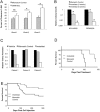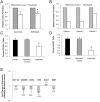Telomerase inhibition targets clonogenic multiple myeloma cells through telomere length-dependent and independent mechanisms
- PMID: 20824134
- PMCID: PMC2931698
- DOI: 10.1371/journal.pone.0012487
Telomerase inhibition targets clonogenic multiple myeloma cells through telomere length-dependent and independent mechanisms
Abstract
Background: Plasma cells constitute the majority of tumor cells in multiple myeloma (MM) but lack the potential for sustained clonogenic growth. In contrast, clonotypic B cells can engraft and recapitulate disease in immunodeficient mice suggesting they serve as the MM cancer stem cell (CSC). These tumor initiating B cells also share functional features with normal stem cells such as drug resistance and self-renewal potential. Therefore, the cellular processes that regulate normal stem cells may serve as therapeutic targets in MM. Telomerase activity is required for the maintenance of normal adult stem cells, and we examined the activity of the telomerase inhibitor imetelstat against MM CSC. Moreover, we carried out both long and short-term inhibition studies to examine telomere length-dependent and independent activities.
Methodology/principal findings: Human MM CSC were isolated from cell lines and primary clinical specimens and treated with imetelstat, a specific inhibitor of the reverse transcriptase activity of telomerase. Two weeks of exposure to imetelstat resulted in a significant reduction in telomere length and the inhibition of clonogenic MM growth both in vitro and in vivo. In addition to these relatively long-term effects, 72 hours of imetelstat treatment inhibited clonogenic growth that was associated with MM CSC differentiation based on expression of the plasma cell antigen CD138 and the stem cell marker aldehyde dehydrogenase. Short-term treatment of MM CSC also decreased the expression of genes typically expressed by stem cells (OCT3/4, SOX2, NANOG, and BMI1) as revealed by quantitative real-time PCR.
Conclusions: Telomerase activity regulates the clonogenic growth of MM CSC. Moreover, reductions in MM growth following both long and short-term telomerase inhibition suggest that it impacts CSC through telomere length-dependent and independent mechanisms.
Conflict of interest statement
Figures



References
-
- Yu GL, Bradley JD, Attardi LD, Blackburn EH. In vivo alteration of telomere sequences and senescence caused by mutated Tetrahymena telomerase RNAs. Nature. 1990;344:126–132. - PubMed
-
- Greider CW, Blackburn EH. Identification of a specific telomere terminal transferase activity in Tetrahymena extracts. Cell. 1985;43:405–413. - PubMed
Publication types
MeSH terms
Substances
Grants and funding
LinkOut - more resources
Full Text Sources
Other Literature Sources
Medical
Research Materials

